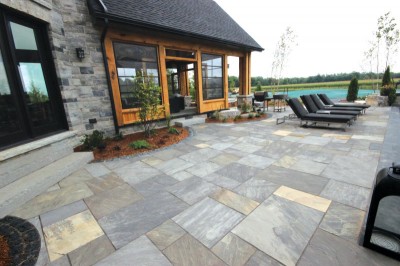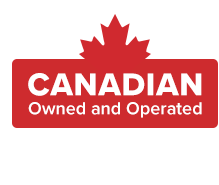25 Landscaping Terms You Should Know (And Their Meaning)

Whether you are doing your own landscaping work or you plan on hiring a landscape professional, it’s important to understand some of the more common terms that relate to landscaping.
There are a variety of technical terms specific to plants themselves, soil conditions, topography, climate, and landscape design aesthetics.
It’s beneficial for a homeowner undertaking a landscaping project to have a basic understanding of the most common landscaping terms. From A to Z, let’s take a look at the ABCs of landscaping.
1. Aerate
To aerate soil means to allow more oxygen to enter so it can better support plant growth. An aerator machine removes cores from the ground, relieving soil that has become compacted.
By putting holes in the turf, pathways are established that allow oxygen-rich air, nutrients, and water to penetrate to the roots. As a general rule, it is best to perform aeration annually for a healthy lawn.
2. Aggregate
Aggregate refers to broken or rounded stones that are either used as a base around footings or as a decorative surface in landscaping. The most common aggregates are gravel and pea gravel.
These can not only provide a change in texture for visual interest but also promote drainage.
3. Backfill
If a retaining wall is needed to mitigate a significant change in elevation, the soil must be excavated in order to construct the wall.
When the wall is complete, that same soil, or new soil brought in, is used to fill in the hole that is left, and this is referred to as backfill.
4. Contour
A less dramatic change in the elevation of the ground plane is referred to as a contour—such as the lines you see on a site plan.
These lines form mounds (elevated grounds) or swales (down which water flows), or can include a combination of both.
5. Drainage
Providing adequate drainage is crucial to any landscape design, as sitting water can kill plants and create insect infestation. Draining involves controlling the flow of water across a property and collecting it, in some cases.
Proper drainage can be accomplished by incorporating grading, permeable surfaces, French drains see number 8), sump pumps or rain gardens.
6. Drought tolerance
The term drought tolerance refers to a plant’s ability to survive with low amounts of water in the summer.
Selecting plants that can tolerate drought is crucial in arid climates, but also worth considering anywhere as a means of water savings.
7. Edging
Edging is done in landscaping by creating a line that demarcates different areas from one another, whether that be between the lawn and curb or sidewalk or a change between two types of plantings.
This can be accomplished with metal strips or even pea gravel.
8. French drain
As mentioned earlier, a French drain helps to collect and redirect surface water and groundwater. It comprises a tench filled with 2-inch round rocks with a perforated pipe.
9. Friable
Friable is a term that refers to a soil that has the desired composition for supporting healthy root growth. Friable soils clod, and when moist easily crumble under pressure.
10. Germination
When a seed sprouts it is called germination. If you grow your lawn or other plants from seeds, you’ll know that germination was successful when you see those tiny green sprouts poking out of the soil!
11. Groundcover
Plants that are referred to as ground cover grow close to the ground and spread out over a larger area. Ground cover plants can provide a lush look to an area of your lawn and some of these plants even flower.
If you have a particularly shaded area, ground cover can be a good solution as most grasses need full sunlight to thrive. Another benefit of ground cover is that it helps to prevent soil erosion.
12. Hardscape
When you think of landscaping, you probably think of all the green stuff. However, another significant component of landscape design is hardscape, which refers to all the “hard” surfaces such as patios, pathways, and walls.
Hardscaping is important as a means of circulation without disrupting plant growth and provides a welcome visual and textural change.
13. Invasive species
Plants that are not indigenous to an area and tend to be difficult to control should be avoided. They have the potential to spread beyond your yard and invade other areas as well. One example of this is kudzu.
14. Liming
If soil is too acidic to support healthy plant growth, lime can be applied to lower the pH to a more neutral, yet slightly acidic level which is preferable for most lawn grasses. The ideal time to lime is just before winter.
15. Microclimate
Climate refers to the weather patterns of a broader area, but within each climate zone exists many microclimates that experience variations in growing conditions and temperatures.
Microclimates are created by changes in elevation, access to sunlight, and draining levels, so it’s possible that your yard can be its own microclimate. Be aware of your specific microclimate so you can choose the right plants for your lawn.
16. Native plant
On the other end of the spectrum from invasive species are native plants, which are indigenous to an area. However, most of the lawn grasses that are popular are likely not native species.
While it is preferable to use native plants, it is perfectly acceptable to use non-native species if they are not invasive and can thrive in your particular climate.
17. Organic matter
Another term for compost, organic matter is created when plant and animal matter decomposes to form a nutrient-rich material, which is an important component of healthy soil.
Organic matter can include lawn clippings and some food waste that has been allowed to sit for a period of time.
18. pH level
The pH scale measures the acidity of the soil, and is technically the measure of hydrogen ion in a solution. The scale typically runs from 0 to 14, with the most acidic at 14 and 7 being neutral.
You should test your soil regularly to confirm it is at optimal levels for the growth of your particular plant species.
19. Raised beds
A raised bed is mounded soil that is contained by an enclosure above ground level. This is a popular approach to vegetable gardening as it allows you to control the content of the soil, particularly when ground soil is inadequate.
It also puts the plants at eye level making gardening easier, and some like the look of raised beds from an aesthetic standpoint.
20. Sod
Sod refers to grass grown in a field, cut into strips, and rolled up (it is held together by the grassroots) to be used to cover lawns.
Laying sod gives your lawn a head start when otherwise it might take months or years for grass grown from seeds to fill in.
21. Setback
Your local building code might enforce setbacks, which are restrictions on what can be built within areas along property lines.
For example, you might have a setback of 10 feet from a property line, which means you can’t build an addition to your home that extends beyond this imaginary line. Setbacks can also affect certain landscape features, so be sure to consult your local building code before you begin your project.
22. Transplant
Transplant simply refers to moving a plant from one location to another. Transplanting is a good option if the plant is not thriving under its current conditions, or can be performed when you are changing up your landscape design.
23. Variegation
Some species of plants have leaves that vary in color, typically white or yellow mixed in with green leaves. These are referred to as variegated plants.
24. Xeriscaping
An approach to landscaping that uses very little or no irrigation, xeriscaping involves planting drought-tolerant species and incorporating more hardscaping than the typical lawn.
25. Zero-turn mower
Standard mowers require completing a large turning radius at the end of each row. Zero-turn mowers instead pivot, and this makes the mowing process that much quicker.
Lawn care professionals often use these types of mowers, and while expensive, they can be a good investment for homeowners with larger lawns.
Legends Landscape Supply
Now that you have a general understanding of common landscaping terms, you are much better equipped to plan out your landscape design or converse with a professional about your options.
A beautifully designed and manicured lawn can contribute to the curb appeal of your home, which provides a sense of pride as a homeowner and can ultimately increase the resale value.
For all of your landscaping needs in Ontario, visit Legends Landscape Supply in Burlington. At Legends Landscape Supply, we offer a wide selection of landscaping products for a variety of projects, selling to both homeowners and local landscapers.
Visit us today to discuss your landscaping plans and pick up all the supplies that you need to execute your vision.



 LANDSCAPE PROFESSIONALS
LANDSCAPE PROFESSIONALS